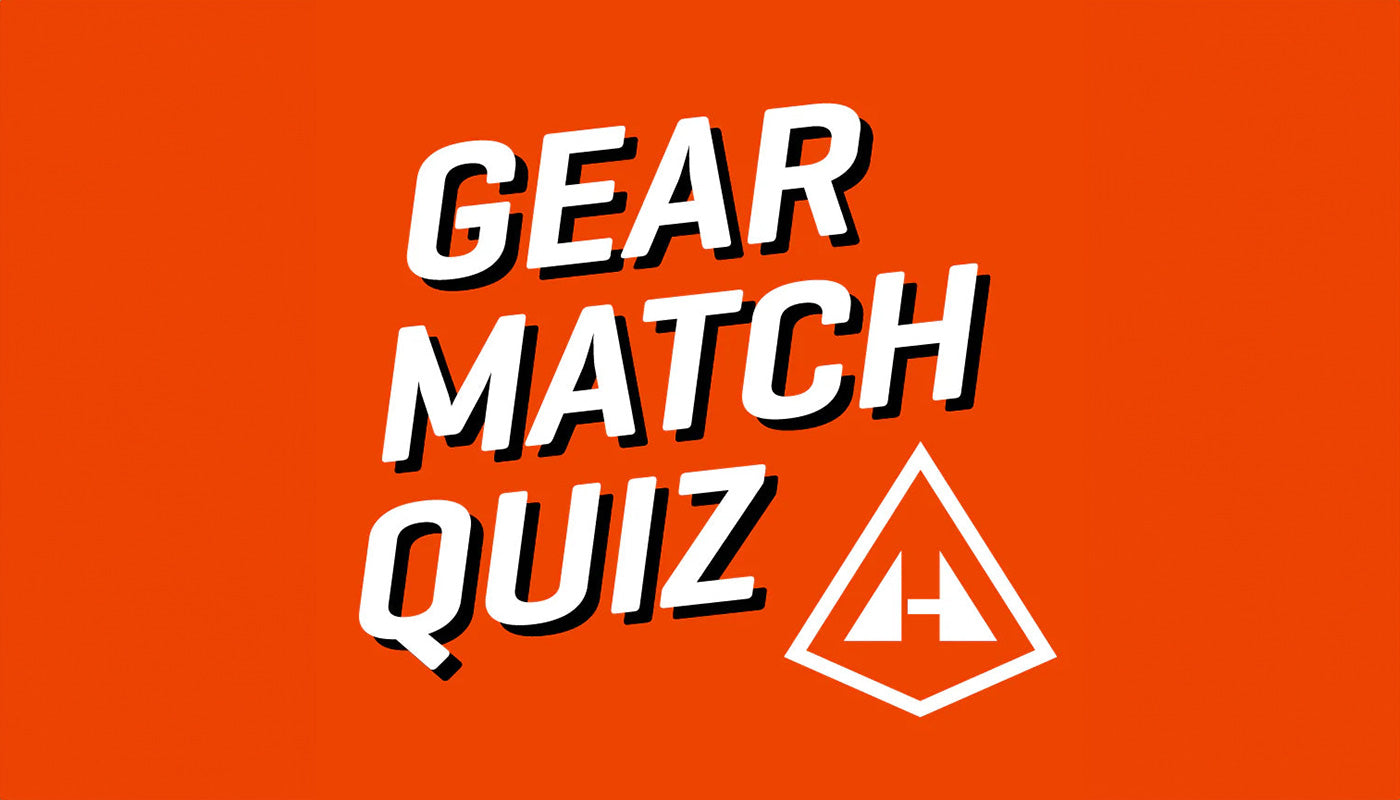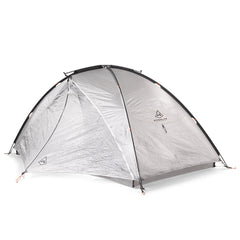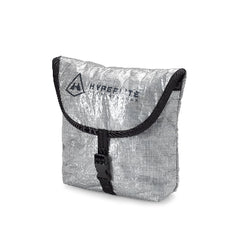Since 1965, the instructors and students of the nonprofit global wilderness school, the National Outdoor Leadership School (NOLS), have immersed themselves in backcountry settings or through courses near home to "Equip people with the skills, resilience, and confidence to lead in all walks of life." Their instructors have applied their skills to help more than 280,000 people learn what it takes to survive and thrive on their own and in team settings in some of the wildest places on Earth. Who better than to ask what kinds of "classroom tools" work best when lessons are in session? We reached out to our friends and NOLS staff, Sanjana Govind and Lindsay Priefert.

SANJANA GOVIND
LOCATION MOST OF THE TIME:
Teaching with NOLS
YEARS INSTRUCTING:
10
POSITION AT NOLS:
Field Faculty
HMG GEAR YOU USE:
Porter 85L, Roll-Top Stuff Sack, and Pod
WHAT KINDS OF TRIPS ARE YOUR CLIENTS SIGNING UP FOR?
Backpacking, canyoneering, climbing and mountaineering, mountain biking
WHAT TYPES OF CHALLENGES WILL THEY BE PRESENTED WITH?
Cooler temperatures are frequent in the mountains, often dropping significantly in the early mornings or at higher altitudes. Combined with more frequent precipitation, We prepare for rain, snow, or hail that can soak gear and clothing, making travel more challenging. Strong winds on exposed ridges or passes test both physical and mental endurance. At the same time, thunderstorms bring lightning risks and sudden downpours that demand quick decisions and proper planning beforehand- We try to keep a tab on the weather daily and track it. Conversely, sunny days at altitude can intensify UV exposure, increasing the need for sun protection and hydration.
The terrain varies dramatically, ranging from narrow, stemy sandstone passages that require balance and precision to expansive landscapes that demand focus over long distances. Steep slopes and snowfields challenge participants with technical skills like glisading and self-arrest. Navigating these environments safely requires physical fitness, adaptability, and an understanding of the terrain.
Travel distances and time also vary greatly. Some days may involve shorter routes of three miles, while others stretch into grueling fourteen-hour days. Each day brings its own demands, testing stamina and the ability to pace effectively over time.
We also navigate through diverse and demanding environments, including snow and ice fields, sandy canyon bottoms, and dense forests. Walking for hours in shifting sand or bushwhacking off trail. Traversing glaciers and crossing crevasses requires technical skills and teamwork, while hauling or lowering packs in narrow canyons adds another layer of difficulty. Climbing high passes brings a combination of altitude and steep ascents. We work together and help each other out with heavy pack loads.
WHAT KIND OF GEAR WORKS BEST IN THESE SCENARIOS? HOW DOES IT NEED TO PERFORM?
Long-sleeved clothing that also can help with UV and is tear-resistant. Durable pack, boots, tent, and rain gear. Warm clothing that can help with moisture wicking and is non-cotton (a warm sleeping bag- the rating will depend on the weather). Some UPF-rated clothing and polarized sunglasses for UV protection both in the sun and snow. I'm a huge fan of lightweight gear as it helps with traveling efficiently and helps me take care of my body, keeps me going for longer. It also teaches me to take care of my gear.
WHY DO YOU RECOMMEND HYPERLITE MOUNTAIN GEAR'S PRODUCTS TO MEET THESE NEEDS?
Porter 85L backpack (Depending on the days of travel in the wilderness) is my personal favorite. The G.O.A.T tote for carrying climbing gear to the crag or maybe even for car camping. It's a multi-use item that can help in carrying groceries and keep single-use plastic away. I mostly use my Roll-Top Stuff Sack and Pod during travel between courses to keep my belongings organized. The Camera Pod is essential to keep the camera safe and dry while traveling in varied terrain–my next purchase. The Essential Umbrella keeps the rain and sun away. I'm from India, and we're big fans of umbrellas. Nothing like a lightweight one! Finally, the Therm-a-rest Neoair Xlite. This is a product I have been using for about seven years now. It takes a little bit of caring and really checking the area you sleep for poky things.

Photo: Nate Shoutis
LINDSAY PRIEFERT
LOCATION MOST OF THE TIME:
Lander, WY
YEARS INSTRUCTING:
12
POSITION AT NOLS:
Program Supervisor and Expedition Field Faculty (Backpacking, Canyoneering, Horsepacking)
HMG GEAR YOU USE:
I own the Porter 85L and the Southwest 70L. I use the larger Porter on courses that require more technical gear or layers, like canyoneering courses in southern Utah or NOLS instructor courses taught during frigid April/May temps and snowy conditions in the Wind River Range of Wyoming.
My Southwest backpack just retired after eight years of intensive service, enduring many a pack-haul up abrasive sandstone and serving as my NOLS kitchen backrest and bottom half of my sleep system - always by my side. Retire in peace.
I just bought a new Southwest 55L! A new era has begun.
WHAT KINDS OF TRIPS ARE YOUR CLIENTS SIGNING UP FOR?
With NOLS, the list of possible combinations is long. We teach a consistent leadership curriculum and wilderness ethic through different skill types in different locations. My favorite combinations include canyoneering in southern Utah, horsepacking near Yellowstone in Wyoming, and backpacking in Alaska or the Wind River Range in Wyoming.
Beyond what skill set and location NOLS students are drawn to, I think they all answer a similar human call–to step forward into the unknown and see how we handle it.
WHAT TYPES OF CHALLENGES WILL THEY BE PRESENTED WITH?
On NOLS courses, participants step into many unknowns. Most of the uncertainty comes from being asked to lead while still learning new skills and moving through a constantly changing environment. Participants make decisions about risk management, navigation, and the human dynamics of moving through the mountains as a small group. Those leadership challenges come alongside long, physically challenging days traveling off-trail in all possible weather.
Instructors face uncertainty as well. While the uncertainty involved with leading beginners and living comfortably outside for 30 days fades with time and experience, new questions pop up–is my instructor team working well together? What is happening in the student group that we can’t see? Are they ready to lead more independently, or do they still need our role modeling? What do they need to travel without us competently?
WHAT KIND OF GEAR WORKS BEST IN THESE SCENARIOS? HOW DOES IT NEED TO PERFORM?
NOLS instructors and students need gear that helps them feel nimble, adaptable, and present to move forward in all this uncertainty.
I want to feel light and nimble. My simple, light backpack inspires me to bring only the essentials. When I have it on, I often forget about it. I need to be able to move and make decisions without the weight of my pack becoming a decision-making factor.
I want to feel open and adaptable. My gear choices help me make space for the unexpected. I take less, so I’m not spending time managing or organizing my stuff. I have less, so packing takes less time. My Hyperlite has only the essentials–no secret compartments or fancy bells and whistles–so packing is simple and fast.
I want to feel present with whatever arises with me or students that day. A pack that is too heavy or overly complicated steals my attention from where I’d like to keep it–on being fully present with my team, on what’s coming up in the group, and on soaking up this beautiful place!
WHY DO YOU RECOMMEND HYPERLITE MOUNTAIN GEAR’S PRODUCTS TO MEET THESE NEEDS?
I love Hyperlite gear because I can’t pretend to predict everything we’ll face out there as a group, but in response to that uncertainty, I don’t take more stuff “just in case.” I pare down to the essentials and create space for the unknown.
Want to learn more about NOLS? Start HERE.























